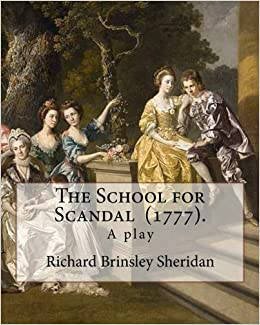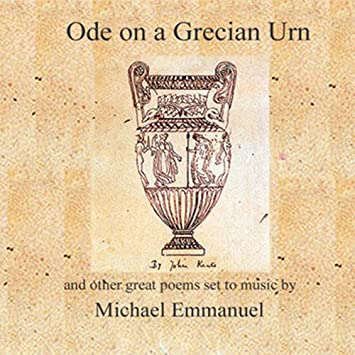The famous Romantic poet John Keats was born on October 31, 1795, at Finsbury in London. When he was less than nine years, his father died of an accident. After studying in the school of Clarke, he was apprenticed to Thomas Hammond, a surgeon and apothecary of Edmonton.
His poetic career started in the year 1814 when he composed a poem ‘Imitation of Spenser’. After that, this Romantic poet never exhausted till his death in 1821 and composed so many famous poems which are appreciated by literary critics and scholars for its poetic characteristics. There are so many characteristics in John Keats poetry and in this essay, we will discuss them one by one.
Keats was a lover of beauty
Table of Contents
No article can be called complete without talking on the issue of John Keats love for beauty while discussing the merits of his poetry. Any person who reads his letters becomes aware of his (poet’s) concept of beauty. In a letter to George and Tom,
he wrote, “With a great poet, the sense of beauty overcomes every other consideration, or rather obliterates all other considerations“. The whole poetic career of this Romantic poet is a witness of representation of beautiful things/elements in his poetry.
To Fanny Brawny, he has further clarified his notion of beauty in these words, “If I should die, I have left no immortal work to make my friends proud of my memory- but I have loved the principle of Beauty in all things, and if I had time, I would have made myself remembered.”
Keats was capable of seeing beauty anywhere and in any object, such as- in great books, in the legend of the old, in the songs of birds, in the faces of women and in the natural scenes. In his famous poem ‘Ode on a Grecian Urn,‘
the poet has narrated so many beautiful and representative incidents of Greek life and fascinating natural scenes. In the same poem’s last two lines the poet has talked about beauty and has declared the beauty inseparable from the truth
“Beauty is truth, truth beauty’-that is all
Ye know on the earth, and all ye need to know.”
According to him, every beautiful thing is the source of permanent enjoyment and pleasure :
“A thing of beauty is a joy forever:
Its loveliness increases; it will never
Pass into nothingness, but will still keep
A bower quiet for us, and a sleep
Full of sweet dreams, and health, and quiet breathing.”. (Endymion)
John Keats’ Poetry is rich in sensuousness
Sensuousness is another striking characteristic of John Keats poetry. Now, the question can come in one’s mind, what is sensuousness? The answer to this question is –“That quality of poetry which influences our five senses (seeing, hearing, touching, smelling and tasting) is called sensuousness.
” All his poems including his Odes are rich in sensuous appeal. His Odes,’Ode to a Nightingale’, ‘ Ode to Autumn’, ‘Ode on a Grecian Urn’, ‘Ode to Psyche’,’Ode on Melancholy’,’Ode to Fancy’ and his ballad ‘La Belle Dame Sans Merci’, and his poems, ‘The Fall of Hyperion’,’La Belle’,’The Eve of St. Agnes’ and ‘Endymion‘ etc. are full of all the five senses’ depiction.
Treatment of Medievalism
Since the Romantic poets were greatly attracted by the world of fancy and imagination, so, they didn’t want to live in the world of reality. They were not satisfied in their contemporary society and found escape somewhere else. Going to the past, to ancient Greece, Keats became almost a Greek.
He sometimes travelled into the age of fancy, romance, chivalry, lords and ladies which is called the Middle Age. He was very much influenced by the art of the Middle ages. His poems such as ‘Isabella’, ‘Eve of St. Mark’,’The Eve of St. Agnes’ and ‘La Belle Dame Sans Merci’ are examples of his treatment of Medieval elements.
Consummate in presenting a picture through the words
A remarkable quality of Keats’ poetry is his presentation of a lively picture through the use of the words. One cannot feel any difficulty in seeing the picture of what he (the poet) talks about. In his poem ‘The Eve of St. Agnes‘ the poet has presented a pleasant and lively picture of Madeline’s room:
“A casement high and triple-arched there was,
All garlanded with cavern imageries
Of fruits, of flowers, and bunches of knot – grass.”
One more example of Keats powerful visual presentation is given below:
“Fair youth, beneath the treed, thou canst not leave
Thy song, nor ever those trees can be bare;
Bold lover, never, never canst thou kiss,
Though winning near the goal – ye do not grieve:
She cannot fade, though thou hast not thy bliss,
For ever thou wilt love, and she be fair!”. ‘Ode on a Grecian Urn’
Some other characteristics of Keats Poetry are Melancholy, Hellenism, use of Romantic imagery and use of Shakespearean elements etc.
Conclusion
John Keats was one of the prominent poets of the second generation of the Romantic Poets, along with P. B. Shelley. and Lord Byron. He was greatly influenced by the works of Spenser and William Shakespeare. His presentation of beauty, sensuousness, Hellenism and other Romantic elements etc. are those qualities of his poetry which have placed him (the poet) amongst the great poets of English Literature.
John Keats FAQ
Name the friend of John Keats
The son of the employer of Keats’ father Charles Cowden Clarke was his friend
Where did Keats die and what was the cause of his death ?
John Keats died in Rome(Italy) on 23 February 1821. The cause of his death was a disease which is known as Tuberculosis.
What is the most quoted statement of Keats about poetry
u0022If poetry comes not as naturally as the leaves to a tree, it had better not come at all.u0022




